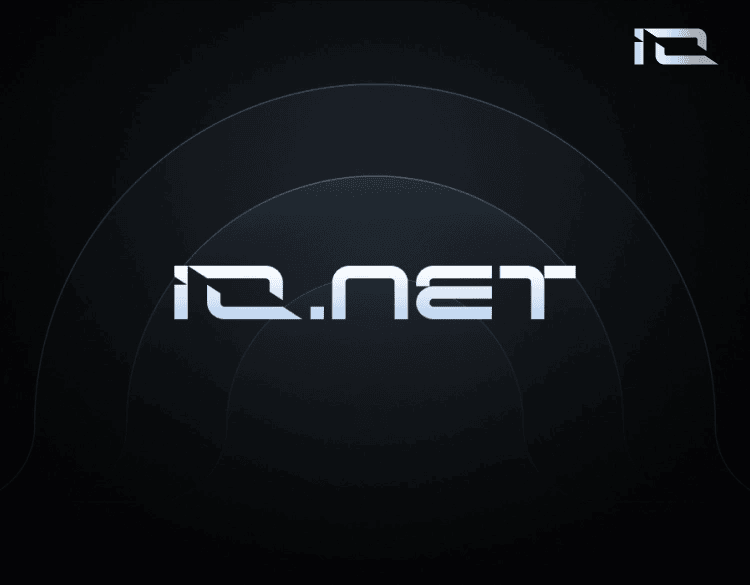
In an age where artificial intelligence is rapidly transforming industries, the demand for computational power has never been greater. Enter io.net, a groundbreaking solution that leverages decentralized GPU networks to power AI development. This innovative approach not only addresses the limitations of traditional GPU networks but also unlocks new potential for efficiency and scalability.
“io.net is revolutionizing the way AI developers access and utilize computational resources, offering a more flexible, cost-effective, and secure alternative to centralized systems.”
From enhanced performance to increased security, io.net is setting a new standard in the AI landscape. In this article, we will explore the multifaceted benefits and technical architecture of io.net, examine its various applications, and provide a comprehensive guide on getting started with this cutting-edge platform.
Introduction to io.net
io.net represents a significant advancement in the sphere of artificial intelligence development. By leveraging decentralized GPU networks, io.net transforms the way developers access and utilize computational resources. This innovative platform not only democratizes AI development but also promotes efficiency and cost-effectiveness.
In today's rapidly evolving technological landscape, the demand for powerful computing resources is greater than ever. Traditional centralized GPU networks often fall short in meeting these needs due to limitations in scalability, availability, and cost. io.net addresses these challenges by offering a decentralized alternative that ensures high performance and reliability at a fraction of the cost.
The Need for Decentralized GPU Networks
As AI continues to evolve, the demand for computational power has surged. Traditional, centralized GPU networks are often expensive, less scalable, and prone to single points of failure.
Decentralized GPU networks address these issues by distributing workload across numerous nodes. This not only enhances scalability but also ensures cost-effectiveness and reduces the risk of network downtime.
Moreover, decentralized networks can leverage underutilized resources globally, optimizing efficiency and reducing latency issues common in centralized systems.
How io.net Works: An Overview
io.net leverages the power of decentralized networks to distribute GPU workloads efficiently. Users can contribute their GPU resources to the network, enabling a shared pool of computational power. This decentralized approach ensures optimal utilization and reduces dependency on central servers.
Key Components:
- Node Operators: Individuals or entities that provide GPU resources. They receive compensation in the form of tokens for their contribution.
- Task Managers: Systems that distribute AI tasks across available nodes, ensuring balanced workloads.
- Clients: Users or organizations that require GPU power for AI development. They submit tasks to the network and leverage the distributed computing capabilities.
By integrating blockchain technology, io.net maintains transparency and ensures secure transactions. Smart contracts automate the distribution of tasks and rewards, minimizing human intervention. The platform's decentralized nature also enhances fault tolerance, making it more resilient against failures.
Benefits of Using io.net for AI Development
io.net offers several key benefits for AI development:
- Cost Efficiency: By utilizing a decentralized network, io.net significantly reduces the costs associated with traditional GPU rentals.
- Scalability: The network's architecture allows for easy scaling, accommodating projects of various sizes without a significant increase in infrastructure costs.
- Flexibility: AI developers can access GPU resources on-demand, enabling them to run experiments and models whenever needed without long-term commitments.
- Reliability: Decentralization ensures that the network remains resilient, minimizing downtime and disruptions even if individual nodes fail.
- Enhanced Performance: By aggregating multiple GPUs from various sources, io.net can offer superior computational power compared to traditional, centralized setups.
These benefits make io.net a compelling option for developers looking to optimize their AI workflows efficiently and cost-effectively.
Technical Architecture of io.net
io.net leverages a decentralized architecture where multiple nodes contribute their GPU resources to form a large, distributed computing network. This setup ensures redundancy, scalability, and seamless integration within various AI development workflows.
Central to its architecture are the following components:
- Node Network: Individual nodes contribute GPU power, with each node participating in the network autonomously, ensuring high availability and resilience.
- Blockchain Layer: A secure and transparent blockchain ensures proper validation of transactions, resource allocation, and reward distribution among contributors.
- Resource Allocation Framework: This system efficiently matches computational tasks with available resources, optimizing performance and ensuring fair usage.
- Consensus Mechanism: A consensus algorithm maintains the integrity of the network, verifying the accuracy and completion of computational tasks.
Moreover, io.net supports various protocols to integrate seamlessly with existing AI tools and frameworks, making it versatile for different types of AI projects. High-speed inter-node communication further boosts performance, ensuring that tasks are completed with minimal latency.
Security and Privacy in io.net
Ensuring security and privacy within io.net is paramount. The network employs advanced encryption protocols to protect data in transit and at rest. Each transaction is validated through a consensus mechanism, reducing the risk of unauthorized access.
Additionally, io.net incorporates privacy-preserving algorithms. These algorithms ensure that any computational tasks performed on the network do not reveal sensitive information. Nodes that contribute GPU resources undergo rigorous security checks to maintain network integrity.
Another layer of security is provided by decentralized identifiers (DIDs). These unique, blockchain-backed identifiers facilitate secure, verifiable interactions without disclosing personal details.
Finally, user data is anonymized and compartmentalized, preventing any single point of failure. This approach ensures that even if one part of the network is compromised, the overall system remains secure.
Use Cases and Applications of io.net
io.net's decentralized GPU network unlocks numerous possibilities across various sectors. Its unique architecture is poised to revolutionize how AI development is approached, applied, and scaled.
1. Machine Learning: Researchers can leverage io.net's extensive GPU resources to train complex models faster and more cost-effectively.
2. Data Analytics: Analytical processes requiring substantial computational power can utilize this network to achieve more efficient data processing.
3. Scientific Research: Various fields, such as genomics and climate modeling, benefit from enhanced computational capacity, leading to faster discoveries and innovations.
4. Autonomous Vehicles: ai.net supports the intensive training needs for self-driving technology, processing vast amounts of data in real-time.
5. Healthcare: Applications like medical imaging and diagnostic analysis gain precision and speed through the increased computational power available.
By providing access to a decentralized pool of GPUs, io.net disrupts traditional barriers in computing, fostering advancements across multiple disciplines.
Comparing io.net with Traditional GPU Networks
Traditional GPU networks are centralized, relying on large-scale data centers managed by corporations. This approach has limitations:
- Cost: High operational expenses due to infrastructure and maintenance.
- Scalability: Limited ability to scale dynamically based on demand.
- Single Point of Failure: Vulnerable to outages and attacks.
In contrast, io.net leverages a decentralized architecture, offering distinct advantages:
- Cost Efficiency: Utilizes distributed resources, reducing costs.
- Scalability: Easily scales by connecting to more decentralized nodes.
- Resilience: Enhanced fault tolerance with no single point of failure.
Overall, io.net provides a more flexible and robust solution for AI developers, addressing the limitations of traditional GPU networks.
Challenges and Limitations of Decentralized GPU Networks
While decentralized GPU networks like io.net promise numerous benefits, they are not without challenges and limitations.
Scalability Issues: Managing a vast, decentralized network efficiently is complex. Ensuring that each node contributes effectively without overwhelming central management requires advanced algorithms and protocols.
Latency Concerns: Unlike centralized systems, which often guarantee high-speed performance, decentralized networks can face latency issues due to the distributed nature of their nodes. This can hinder real-time AI applications.
Resource Variability: The diverse range of hardware in a decentralized system means inconsistent performance. Variability in GPU capabilities can lead to uneven processing power distribution.
Security Risks: Although decentralization can enhance security through redundancy, it also introduces new vulnerabilities. Each node presents a potential entry point for malicious attacks, necessitating robust security measures.
Regulatory Compliance: Operating across multiple jurisdictions introduces regulatory challenges. Compliance with varying data protection laws and industry standards can complicate the management of decentralized networks.
Interoperability Challenges: Ensuring seamless interaction between different technologies and platforms within a decentralized network can be problematic. Standardizing protocols becomes essential to maintain network coherence.
Addressing these challenges is critical for the effective implementation and widespread adoption of decentralized GPU networks like io.net. Ongoing research and development are essential to overcoming these hurdles and unlocking the full potential of decentralized AI infrastructure.
Future Prospects and Innovations in io.net
Looking ahead, io.net is poised to revolutionize AI development through several innovative advancements. One imminent prospect is the integration of quantum computing, which could exponentially increase computational power and efficiency. This would significantly reduce training times for complex models.
Another area of focus is enhancing interoperability with various AI frameworks. By supporting a wider range of frameworks, io.net can attract a diverse group of developers, fostering a more inclusive and innovative ecosystem.
Additionally, the development team is exploring advanced machine learning optimization techniques. These include automated hyperparameter tuning and more efficient model pruning, aimed at maximizing performance while minimizing resource usage.
Future updates will also prioritize user experience. This encompasses streamlined interfaces, more intuitive workflows, and comprehensive documentation. Such improvements will make the platform more accessible and user-friendly, encouraging broader adoption.
Beyond technical enhancements, io.net is committed to expanding its global network of nodes. Increased node density will provide more robust and resilient computational capabilities, ensuring high availability and geographic redundancy.
Getting Started with io.net: A Step-by-Step Guide
Embarking on your journey with io.net is straightforward. Follow this step-by-step guide to get started:
Step 1: Register an Account
Visit the io.net website and create an account. You'll need to provide basic information and verify your email address.
Step 2: Install the io.net Client
Download and install the io.net client application suitable for your operating system. The client will allow you to connect to the decentralized network.
Step 3: Configure Your Environment
Set up your development environment to integrate with io.net. Detailed configuration guides for various programming languages and frameworks are available in the documentation.
Step 4: Connect to the Network
Launch the io.net client and sign in with your account credentials. The client will automatically connect you to the decentralized GPU network.
Step 5: Submit Your AI Tasks
Use the client to submit your AI development tasks. You can monitor the progress and manage your tasks through an intuitive dashboard.
Step 6: Monitor and Optimize
Review the performance metrics and optimize your tasks accordingly. io.net provides real-time analytics to help you make informed decisions.
By following these steps, you can leverage the robust capabilities of io.net to enhance your AI development projects.
Community and Support for io.net Users
The io.net community is a valuable resource for both novice and experienced AI developers. The platform offers multiple avenues for support and collaboration:
- Online Forums: Engage with fellow users, ask questions, and share insights on dedicated forums.
- Documentation: Access detailed guides and FAQs to help you navigate through the platform's features.
- Live Chat Support: Get immediate assistance from the io.net support team via live chat.
- Webinars and Workshops: Participate in regular online events to stay updated on new features and best practices.
- GitHub Repository: Contribute to and learn from open-source projects maintained by the io.net community.
By leveraging these resources, users can maximize their productivity and ensure they are utilizing io.net to its fullest potential.
Conclusion: The Impact of io.net on the Future of AI
io.net promises to revolutionize the landscape of AI development by addressing the limitations of traditional GPU networks. By leveraging a decentralized approach, it provides enhanced scalability, cost-effectiveness, and accessibility.
This innovative platform empowers developers and researchers by offering a collaborative ecosystem that fosters rapid AI advancements. Moreover, the increased security and privacy features ensure that sensitive data remains protected throughout the computational process.
As more industries recognize the value of decentralized GPU networks, io.net stands poised to become a cornerstone in the evolution of AI technology. With its commitment to continuous improvement and user support, io.net is set to play a pivotal role in shaping the future of AI development. Embracing this platform will pave the way for unprecedented progress and innovation in the field of artificial intelligence.



